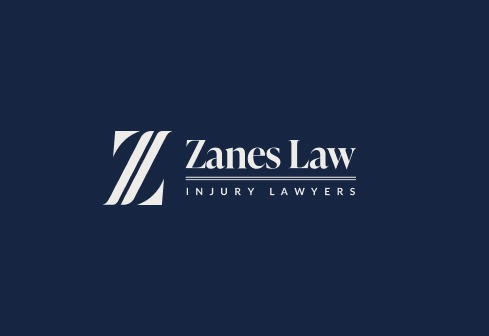The legal team at Zanes Law is thrilled to announce its latest big win. In early February, we settled for $410,000 after our client’s motorcycle rear-ended another vehicle.
The settlement represents an especially noteworthy win that demonstrates Zanes Law’s lawyers’ keen ability to interpret liability theory for the benefit of our clients.
A Chain-Reaction Accident with Multiple Collisions and Injuries
This accident involved multiple vehicles and multiple collisions, making liability a tricky venture. The sequence of events was as follows:
- Our client was riding his motorcycle just as an accident was unfolding further ahead on the interstate.
- In the developing accident, traffic had slowed on the interstate just as a driver (V1) was entering from the onramp. Unaware of the slowing traffic, V1 collided with the rear of the vehicle in front of him.
- This collision caused interstate traffic to come to an abrupt stop, causing another vehicle (V3) to strike V1 and come to an immediate and short stop.
- Our client, who was now approaching the scene on his motorcycle, collided with V3. Another vehicle (V4) then crashed into our client’s motorcycle.
The impact of the collision resulted in significant injuries for our client, including multiple broken bones.
Strategic Use of Liability Theory in a Rear-End Collision
Typically, in a rear-end collision, the trailing driver is at fault for the accident and liable for all damages.
However, our Zanes Law team was able to collect the insurance policy limits on our client’s uninsured motorist (UIM) policies.
Our liability theory proposed that V1, as the driver who caused the original accident, also was responsible for the second collision that involved our client. We also filed a claim against V3, the driver that struck V1.
What You Should Know About Rear-End Collisions
Rear-end collisions are very common. They are the most commonly occurring type of motor vehicle accident in Arizona.
According to Motor Vehicle Crash Facts 2017, a report published by the Arizona Department of Transportation, rear-end collisions comprise almost 45% of motor vehicle crashes in the state. In 2017, 13,859 injuries were caused by this type of accident.
Knowing When a Trailing Driver is Not at Fault for a Rear-End Collision
Most people associate rear-end crashes with one driver following too closely behind another driver. In these cases, the trailing driver is at fault and liable for the accident and the injuries that result.
But there are other causes for rear-end collisions, for which the trailing driver would be neither at fault nor liable.
Other Examples of Rear-End Collisions Where the Trailing Driver is Not at Fault:
- Lead vehicle’s driver is driving recklessly, making a collision by trailing vehicle unavoidable
- Lead vehicle’s driver switches lanes suddenly, cutting off the trailing vehicle
- Lead vehicle’s driver suddenly slams on his or her brakes—especially at high speeds, a negligent action
- Lead vehicle’s brake lights are burned out, so the trailing driver had no way of knowing that the lead-vehicle driver was stopping or slowing
If You Have Questions About Your Motorcycle Accident or Rear-End Collision, Call Us
Our firm is ready to answer your motorcycle accident or rear-end collision questions in a free, no-obligation legal consultation. Call us today at 866-499-8989.




